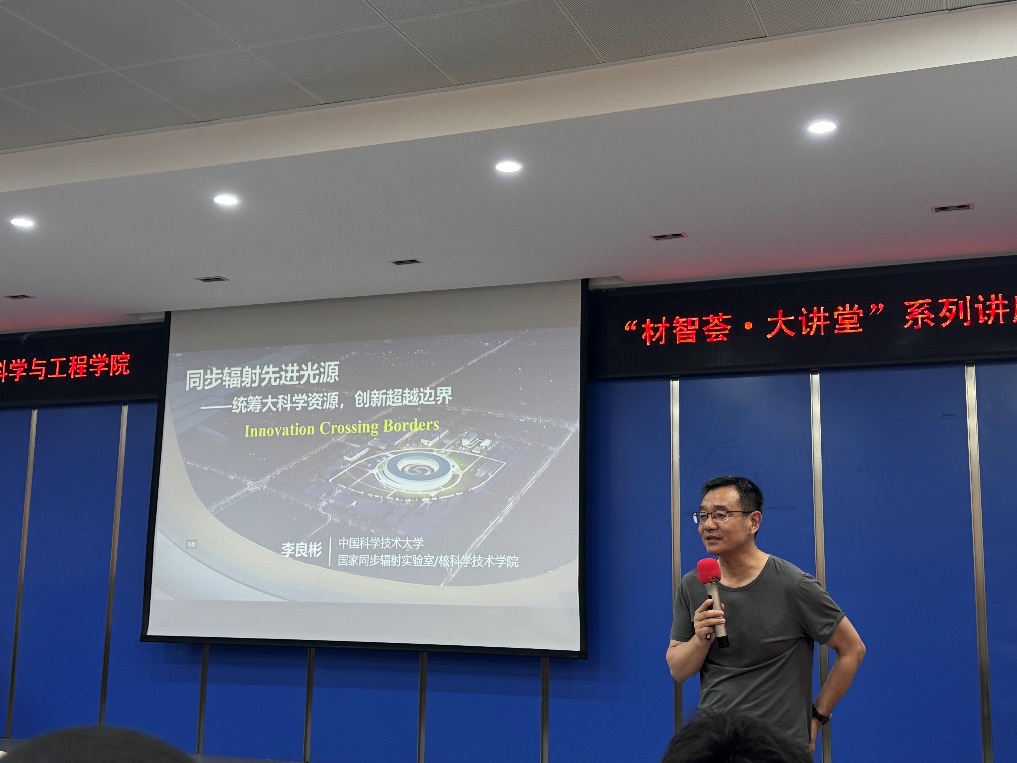On the morning of June 12, 2025, Professor Liangbin Li from our laboratory was invited to Zhengzhou University to deliver an academiclecture titled “Advanced Synchrotron Light Sources: Coordinating Mega-Science Resources and Innovating Beyond Boundaries.” The lecture was part of the 51st session of the “Materials Intelligence Forum” and the Graduate “Distinguished Scholars Forum”. The event was held in Room 207 of the Materials Buildingon Zhengzhou University’s main campus and attracted a large audience of faculty and students.

This lecture was hosted by the Graduate School and the Party Committee Graduate Work Department of Zhengzhou University, and organized by the School of Materials Science and Engineering. It aimed to promote academic exchange and collaboration among universities and to foster a strong research atmosphere.
Professor Liangbin Li focused on the construction and scientific applications of major research infrastructure related to advanced synchrotron light sources. He systematically introduced the development of synchrotron radiation technology in terms of spatial, temporal, and energy multidimensional resolution, and explained how this platform drives breakthroughs in polymer materials research.
In his lecture, Professor Li emphasized the strategic role of the Hefei Advanced Light Facility in serving major national needs and advancing materials science, and shared the latest achievements from his laboratory on the structure–property relationships in polymer film processing.

During the interactive session following the lecture, Professor Liangbin Li engaged in in-depth discussions with faculty members and students ontopics such as synchrotron radiation experimental methods, industrial applications of advanced functional polymer films, and research career planning for young scholars. The atmosphere was lively, and the response was enthusiastic.
This lecture not only showcased the achievements of our university’s high-level researchers in the construction and application of major national scientific platforms, but also contributed positively to enhancing inter-university research collaboration and promoting the cultivation of high-level talent.


